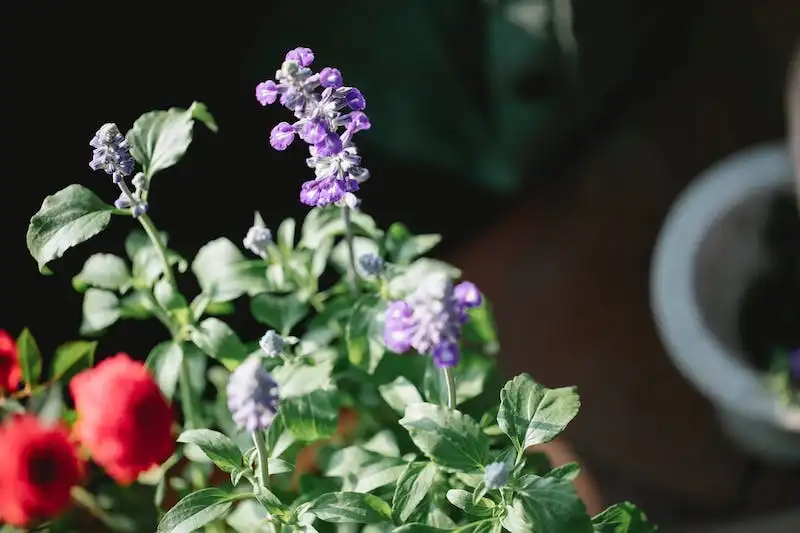When it comes to growing cantaloupes in your garden, there are a number of variables to consider. The number of cantaloupes per plant can vary depending on the species of muskmelon you choose to grow, as well as other factors such as planting density, irrigation, and pruning practices.
One species of cantaloupe that is well-suited for home gardeners is the Tirreno. This variety is known for its small to medium fruit size, making it easier to manage and store. The Tirreno typically yields approximately 2 to 4 cantaloupes per plant, given the right conditions.
When planting cantaloupes, it is important to note that these plants require plenty of space to grow and spread out. They should be planted in well-drained soil and given ample sunlight. Cantaloupes also benefit from regular irrigation to ensure proper ripening and fruit development.
To increase the number of cantaloupes per plant, you can use techniques such as pruning and reducing the number of plants per row. By pruning the plants, you encourage them to produce fewer but larger fruits. Additionally, spacing the plants further apart in the row can allow them to grow larger and yield more fruit per plant.
In conclusion, the number of cantaloupes per plant can vary greatly depending on the species, planting practices, and other factors. It is important to choose the right species for your garden and provide the necessary care and conditions for optimal fruit production. With proper attention and care, you can enjoy a bountiful harvest of ripe and delicious cantaloupes.
How to Grow Cantaloupe Muskmelon in Your Garden
Growing cantaloupe muskmelon in your garden can be a rewarding experience. These juicy and flavorful fruits are not only delicious but also packed with health benefits. Whether you are a beginner or an experienced gardener, here is a guide to help you successfully grow cantaloupes in your garden.
Choosing the Best Cantaloupe: When selecting cantaloupe seeds or seedlings, choose healthy ones that are free from any signs of diseases or pests. The best time to plant them is typically in the warmer months, such as late spring or early summer.
Preparing the Planting Site: Cantaloupes thrive in well-drained soil with plenty of sunlight. Prepare the planting site by tilling the soil and adding organic matter or compost to improve drainage and fertility. If you have heavy clay soil, consider planting cantaloupes in raised beds or containers.
Planting the Seedlings: Dig a hole in the prepared soil and place the cantaloupe seedling gently into the hole. Backfill the hole with soil, ensuring that the stem is above the soil line. Water the seedlings thoroughly after planting.
Watering and Fertilizing: Cantaloupes need regular watering to keep the soil consistently moist. However, be careful not to overwater, as this can lead to fungal diseases. Fertilize the plants once a month with a balanced fertilizer to provide the necessary nutrients.
Support and Pruning: As the cantaloupe plants grow, they may require support to prevent the fruits from touching the ground. Erect a trellis or a bush to support the plants. Prune any excessive foliage, especially the leaves blocking sunlight from reaching the fruits, to maximize fruiting.
Pollination: Cantaloupes rely on bees and other pollinators for successful pollination. To attract pollinators, plant flowers nearby and avoid using pesticides that can harm them. If pollination seems low, you can hand-pollinate the flowers using a small brush or cotton swab.
Harvesting: Cantaloupes are typically ready for harvest 60-90 days after planting. The fruit should have a strong aroma and a slightly soft stem attachment when ripe. To harvest, use a sharp knife or shears to cut the fruit from the vine, leaving a short stem.
Concluding Thoughts: Growing cantaloupe muskmelon in your garden can be a fun and fruitful endeavor. By following this guide, you can enjoy a bountiful crop of delicious, juicy fruits. Remember to choose the best quality seeds or seedlings, provide the necessary care, and enjoy the flavors of your hard work at the harvest time.
Cantaloupe Varieties
When it comes to cantaloupes, there are various varieties to choose from. Each variety has its own characteristics in terms of planting, weight, flavor, and how much watering they require. Some varieties are well-suited for every gardener, while others may require a little more experience in plant-growing.
One popular variety is the Cantaloupe Hybrid, which is a wonder in terms of its growth and flavorful orange fruits. They are known to produce large, sweet melons that can weigh up to 5 pounds. The Cantaloupe Hybrid is a great choice for growers who want to have a bountiful harvest.
Another variety is the Yellow Canary. As the name suggests, this variety produces yellow melons with a delicious taste. They are easy to grow and can thrive in various climates. The Yellow Canary cantaloupes are also known for their high yield, making them a favorite among many growers.
If you prefer a smaller-sized cantaloupe, the Petit Gris de Rennes variety is a good option. These melons typically weigh around 2 pounds and have a sweet and aromatic flavor. They are well-suited for gardeners who have limited space or prefer a more manageable plant.
When it comes to planting cantaloupes, it’s important to consider the spacing between each plant. For row planting, a spacing of approximately 3-4 feet is recommended to allow the plants to grow healthy and avoid any problems of crowding. Using a mulch can also help conserve moisture and reduce weed growth.
Cantaloupe plants are known for their sprawling vines, which can reach up to 6 feet long. The vines produce tendrils that help support the growth of the melons. It’s best to provide support, such as trellises or cages, to prevent the fruits from lying directly on the ground, where they may become damaged or prone to pests.
To ensure that the cantaloupes ripen properly, it’s important to pay attention to the signs. Ripe cantaloupes have a pleasant smell and the vines will start to dry out and turn brown. You can also gently press on the stem-end of the fruit – if it gives a little, it is ripe and ready to be harvested.
When it comes to irrigation, cantaloupes require regular watering, especially during dry periods. The specific method and frequency may vary depending on the variety and climate, but as a general rule, it’s best to water deeply and less frequently to encourage deep root growth.
In conclusion, there are many different cantaloupe varieties to choose from, each with their own unique characteristics. It’s important to choose a variety that is well-suited for your growing climate and preferences. With proper care and attention, you can enjoy a bountiful harvest of sweet and flavorful cantaloupes.
How to Grow Cantaloupe
Are you wondering how to grow cantaloupe? Cantaloupes, also known as muskmelons or sweet melons, are a delicious and refreshing fruit that can be grown in your own backyard! This article will give you a complete guide on how to grow cantaloupes, from planting to harvesting.
1. Planting Cantaloupes
Cantaloupes need warm weather and full sun to thrive. You can start growing cantaloupes from seeds or by purchasing transplants from a local nursery or online. Find a location in your garden that receives at least 6 hours of direct sunlight every day.
Prepare the soil by removing any weeds or rocks and adding compost or well-rotted manure to improve soil fertility. Plant the cantaloupe seeds or transplants 1 inch deep, with 3 to 4 feet of space between each plant.
2. Growing Cantaloupes
Cantaloupe plants need regular watering to ensure healthy growth. Irrigate the plants deeply once a week, providing about 1 inch of water each time. During hot summer months, you may need to increase the frequency of watering.
It’s important to keep the soil consistently moist, but not overly saturated. Use mulch around the plants to help conserve moisture and prevent weeds.
As the cantaloupe vines grow, they will need support. You can use trellises, stakes, or cages to train the vines to grow vertically. This will save space in your garden and make harvesting easier.
3. Care and Pests
Cantaloupes are relatively easy to care for, but there are a few things you should keep in mind. Regularly prune the vines to keep them from taking over your garden and to improve air circulation around the plants.
Monitor the plants for any signs of pests or diseases, such as aphids or powdery mildew. Use organic pest control methods or consult a local gardening expert for advice on how to deal with specific problems.
4. Harvesting Cantaloupes
Most cantaloupe varieties take about 80-90 days to fully mature. Look for a change in the color of the fruit’s rind, which should turn from green to beige or yellow. The fruit should also have a nice aroma and give a little when you press the end opposite the stem.
To ripen cantaloupes, you can leave them on the vine or gently pluck them off and place them in a tray. If you want to force ripen the cantaloupes, store them in a paper bag with a banana or apple, as the ethylene gas released by these fruits helps accelerate the ripening process.
Conclusion
Now that you have a complete guide on how to grow cantaloupes, you can start cultivating your own crop of delicious, sweet melons. Follow the tips and techniques mentioned in this article to ensure successful cantaloupe growing. Enjoy the reward of harvesting and savoring the taste of homegrown cantaloupes!
For more related articles and resources on cantaloupe growing, click here.
Related Articles:
– The Best Varieties of Cantaloupes to Grow
– The Summit of Cantaloupe Flavor: How to Choose the Perfect Melon
– Problems with Cantaloupe and How to Solve Them
Posts You May Like:
– 5 Tips for Successful Plant-Growing with Cantaloupes
– The Value of Irrigation in Cantaloupe Production
For a full article on growing cantaloupes, see below.




